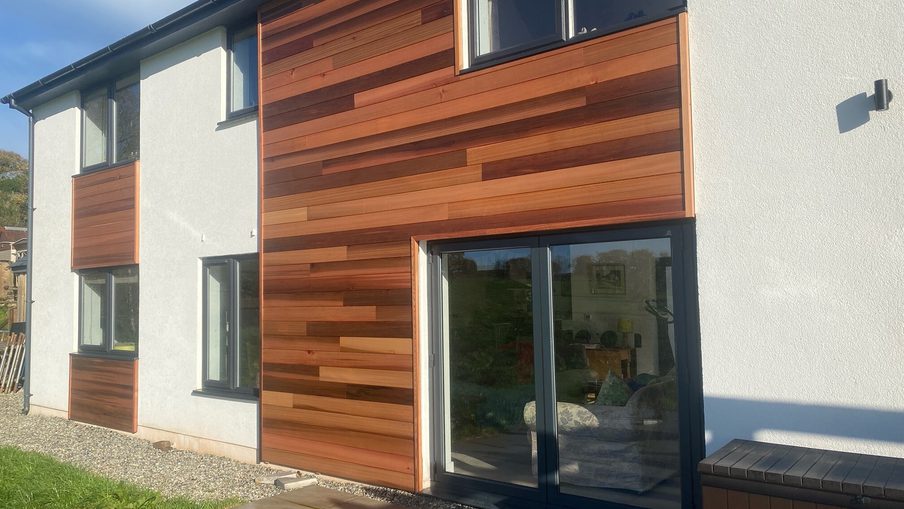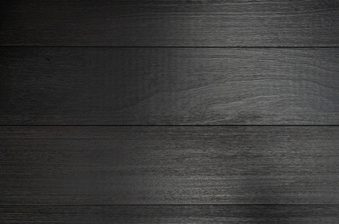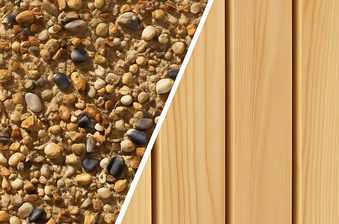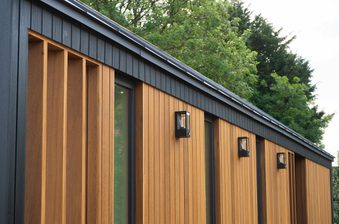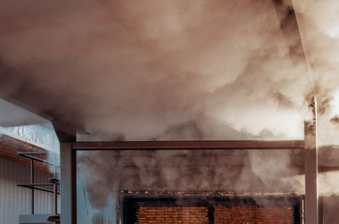Shiplap and V-groove (or V-joint) are two of the most popular types of cladding profile. Both can have a tongue and groove fit.
The key difference is that shiplap has a curved lip, whereas V-groove creates a flat surface with a distinctive ‘V’ between each board once installed. Additionally, shiplap is only fitted horizontally, but V-groove is suitable for both horizontal and vertical fitting.
This can make shiplap the better choice for a traditional and rustic aesthetic, whereas V-groove offers a sleeker, more contemporary look.
Shiplap
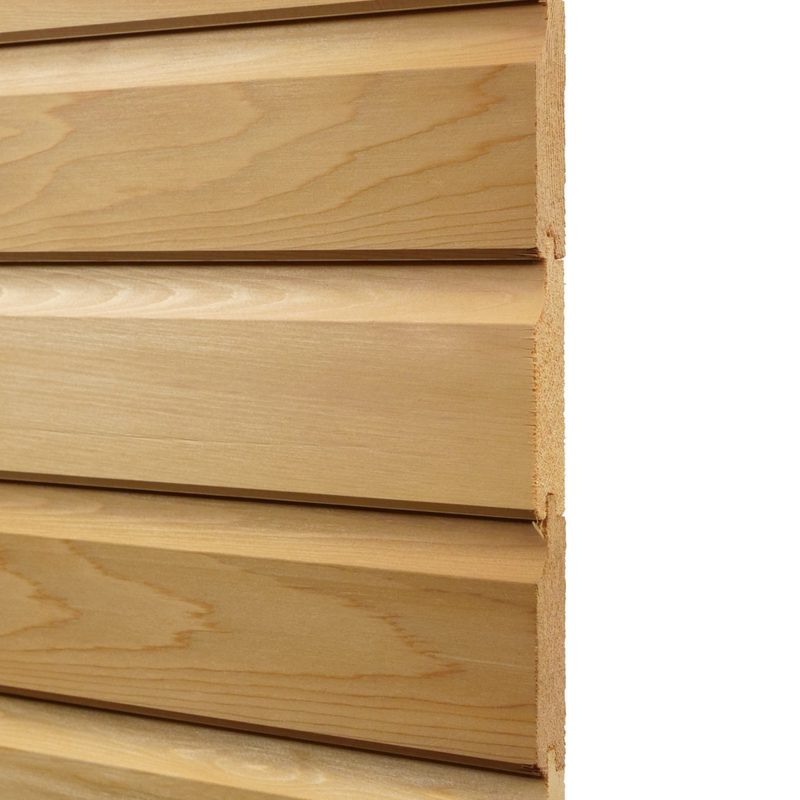

Shiplap has a curved detail on the upper part of the cladding (the ‘lip’). As well as giving the profile a slightly softer look, this curve can also facilitate water run off.
It’s definitely a more traditional profile choice, suited particularly to a garden shed or rural-type outbuildings – the lip helps with rainwater resistance and avoiding moisture-related damage like swelling, warping and cracking. It is almost always used horizontally.
This profile typically has a tongue and groove joint fit – note the protruding ridge (the ‘tongue’) and the slot (the ‘groove’). It is also known as ‘shiplap tongue and groove’ or ‘shiplap T&G’.
However, shiplap doesn't strictly have to be tongue and groove – some styles rebated. This allows boards to overlap, rather than have an interlocking fit. Shiplap is defined by its curved lip, not its joint type.
V-groove
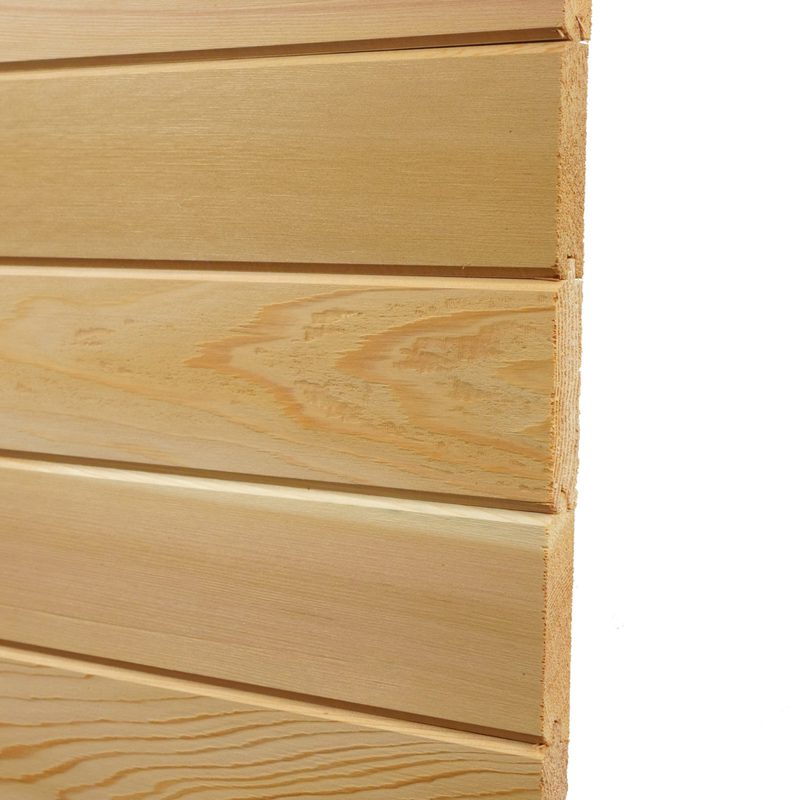

V-groove (sometimes referred to as V-jointed, or often simply ‘tongue and groove’) is one of the most popular and versatile cladding profiles.
Once fitted, V-groove’s interlocked cladding boards create a flat surface with a distinctive ‘V’ between each board – hence the name. This also results in a neat shadow line.
The clean, sleek look created by this profile – as well as the fact it can be installed horizontally and vertically, unlike shiplap – has made it a go-to choice for a contemporary, design-forward project.
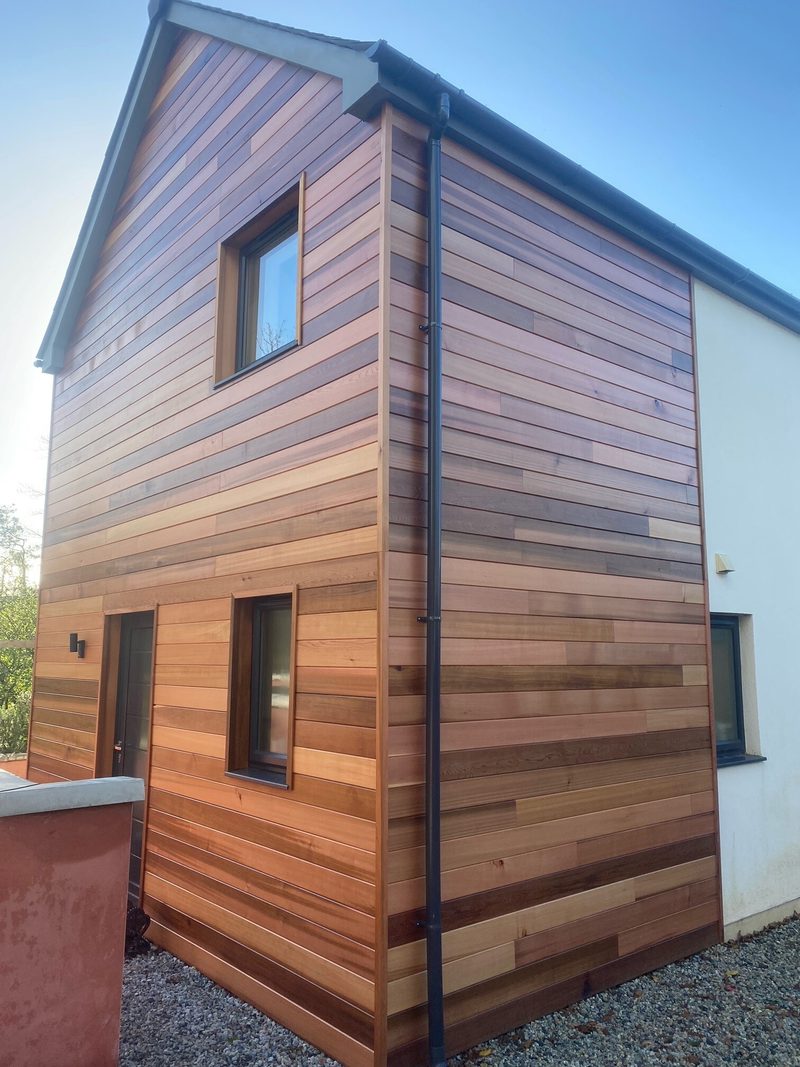
View project: western red cedar cladding in DTC3, one of our popular V-groove cladding profiles
Despite shiplap being optimal for rainfall resistance, with appropriate installation, V-groove cladding still protects buildings very effectively from weather damage.
‘Shiplap vs tongue and groove’? Clearing up any confusion
We often see people incorrectly seeking to compare shiplap with tongue and groove. The thing that distinguishes shiplap is its curved lip, not its joint type – as we’ve mentioned, shiplap can technically be a tongue and groove profile too.
It’s also common for people to refer to V-groove as simply ‘tongue and groove’, overlooking the fact that there are a number of other profiles classified as tongue and groove, including shiplap and shadow gap!
There’s also potential for confusion with overlap styles such as feather edge, which do not have a tongue and groove fit.



Decided between shiplap and V-groove?
Explore our wide range of quality timber cladding. Our products, made from high-quality and sustainably-sourced species, are machined to profile at our factory in North Yorkshire.
So, whether your choice is V-groove, shiplap, feather edge or something designer like shadow gap or square edge, we’ve got you covered. Start your project today by clicking the ‘Get in touch with our team’ button below or by messaging us through our contact page.
